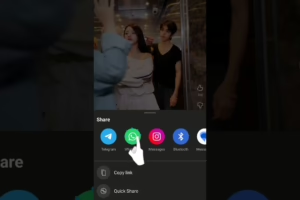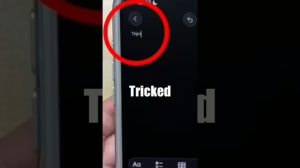Headlines Emphasizing Safety and Risk Management: A Deep Dive into Effective Communication Strategies [mfn1]
Abstract: This article explores the crucial role of headlines in conveying safety and risk management messages effectively. Examining various headline styles, including those that emphasize prevention, consequence, urgency, and solution-oriented approaches, we analyze their impact on audience perception, behavior modification, and overall safety culture. Through case studies and practical guidelines, this article aims to equip safety professionals and communicators with the knowledge and tools to craft compelling headlines that drive engagement and promote proactive risk mitigation strategies.
Keywords: Safety, Risk Management, Headlines, Communication, Prevention, Consequences, Urgency, Solutions, Safety Culture, Audience Engagement, Persuasion, Behavioral Change.
1. Introduction: The Power of a Compelling Headline in Safety and Risk Communication
In the fast-paced, information-saturated world of today, capturing audience attention is a formidable challenge. This challenge is particularly acute in the realm of safety and risk management, where the subject matter can often be perceived as dry, technical, or even fear-inducing. The headline, as the first point of contact with an audience, becomes a critical gateway for engaging individuals with crucial safety information. A well-crafted headline can pique interest, convey urgency, and motivate action, ultimately contributing to a safer environment and a more proactive risk management culture.
Conversely, a poorly constructed headline can be easily overlooked, misinterpreted, or even generate unintended negative reactions, undermining the intended message and potentially increasing risk exposure. Consider the difference between a generic headline like “Safety Meeting Scheduled” and a more engaging one such as “Protect Yourself: Learn the 5 Key Hazards on the Shop Floor.” The latter immediately conveys the value proposition to the reader and subtly emphasizes the importance of proactive safety measures.
This article delves into the art and science of crafting effective headlines that prioritize safety and risk management. We will explore different headline styles, analyze their impact on audience perception and behavior, and provide practical guidelines for creating headlines that are not only informative but also compelling and persuasive. We will also examine the ethical considerations involved in using headlines to communicate safety and risk, ensuring that information is conveyed accurately and responsibly.
2. The Psychology of Headlines: Why They Matter
The effectiveness of a headline rests on its ability to connect with the audience on a psychological level. Understanding the cognitive processes involved in headline processing is crucial for crafting messages that resonate and drive desired outcomes.
2.1 Attention and Cognitive Load:
Humans have limited attention spans, and headlines must quickly capture interest to avoid being ignored. The concept of cognitive load, which refers to the mental effort required to process information, plays a crucial role here. Headlines that are too complex, ambiguous, or filled with jargon can increase cognitive load, making them less likely to be understood and remembered. Effective headlines prioritize clarity and simplicity, using concise language and familiar terms to minimize cognitive burden.
2.2 Emotional Impact and Persuasion:
Headlines can tap into a range of emotions, including fear, hope, curiosity, and empathy. By carefully selecting words and framing the message appropriately, headlines can influence audience perception and motivate action. For example, a headline highlighting the potential consequences of ignoring safety protocols (“Ignoring These Rules Could Cost You Your Life”) can leverage fear to encourage compliance. Conversely, a headline emphasizing the benefits of proactive safety measures (“Protect Your Family: Learn Safe Driving Tips”) can appeal to a sense of responsibility and care.
2.3 Anchoring Bias and Framing Effects:
Headlines can also influence decision-making through cognitive biases. Anchoring bias, for example, refers to the tendency to rely heavily on the first piece of information received (the “anchor”) when making subsequent judgments. A headline that presents a specific statistic about workplace accidents can serve as an anchor, influencing how the audience perceives the overall risk level.
Framing effects, another important psychological concept, refer to the way in which information is presented, which can significantly impact audience response. A headline that frames a safety issue in terms of potential losses (“Failure to Wear PPE Could Result in Injury”) may be more effective than a headline that frames it in terms of potential gains (“Wearing PPE Can Help You Stay Safe”).
2.4 Memory and Recall:
Effective headlines are not only memorable but also easily recalled when needed. Using strong verbs, vivid imagery, and creating a sense of urgency can enhance memory retention. Rhyme, alliteration, and other literary devices can also make headlines more memorable.
3. Headline Styles for Safety and Risk Management: A Typology
Different situations call for different headline styles. The following section explores various approaches, highlighting their strengths and weaknesses, and providing examples of how they can be used effectively in safety and risk management communication.
3.1 Prevention-Focused Headlines:
These headlines emphasize proactive measures and strategies to prevent accidents and incidents. They often highlight the benefits of adhering to safety protocols and adopting safe work practices.
- Strengths: Promotes a proactive safety culture, empowers individuals to take control of their safety, and emphasizes the positive outcomes of safe behavior.
- Weaknesses: May be perceived as less urgent than consequence-focused headlines, and may not be effective in situations where immediate action is required.
- Examples:
- “Prevent Slips and Falls: The 3-Second Rule That Could Save You”
- “Stop Accidents Before They Happen: Mastering Hazard Identification”
- “Safe Driving Starts with You: Tips for Avoiding Road Accidents”
- “Protect Your Hearing: Wear Earplugs and Prevent Noise-Induced Hearing Loss”
3.2 Consequence-Focused Headlines:
These headlines highlight the potential negative consequences of ignoring safety protocols or engaging in risky behavior. They often use strong language to create a sense of urgency and deter unsafe practices.
- Strengths: Effective in capturing attention and motivating immediate action, particularly in situations where the risks are high.
- Weaknesses: Can be perceived as fear-mongering or overly negative if not used carefully, and may not be suitable for promoting long-term behavior change.
- Examples:
- “Ignoring Safety Rules Could Cost You Your Job…or Your Life”
- “Distracted Driving: Every Text Message Puts You and Others at Risk”
- “The Hidden Dangers of Complacency: A Moment of Inattention Can Change Everything”
- “Unsecured Loads: A Recipe for Disaster on the Highway”
3.3 Urgency-Focused Headlines:
These headlines emphasize the need for immediate action, often highlighting time-sensitive risks or opportunities to mitigate potential hazards.
- Strengths: Effective in mobilizing individuals to respond quickly to emerging threats or critical situations.
- Weaknesses: Can create unnecessary anxiety if not used appropriately, and may not be effective in situations where a more measured and thoughtful approach is required.
- Examples:
- “Emergency Alert: Evacuate the Building Immediately Due to Gas Leak”
- “Flash Flood Warning: Seek Higher Ground Now!”
- “Time is Running Out: Renew Your Safety Certification Before It Expires”
- “Act Now to Prevent Heatstroke: Stay Hydrated and Take Frequent Breaks”
3.4 Solution-Oriented Headlines:
These headlines focus on providing solutions to safety challenges, offering practical advice and guidance on how to mitigate risks and improve safety performance.
- Strengths: Empowers individuals to take control of their safety, provides valuable information and resources, and promotes a positive and proactive safety culture.
- Weaknesses: May not be as attention-grabbing as consequence-focused headlines, and may require more effort to communicate the value proposition to the audience.
- Examples:
- “Mastering Ergonomics: Simple Steps to Prevent Back Pain at Work”
- “Unlock Safer Work Practices: The Ultimate Guide to Hazard Control”
- “Boost Your Safety Performance: Implementing a Near-Miss Reporting System”
- “Conquer Fire Hazards: A Comprehensive Guide to Fire Prevention and Suppression”
3.5 Question-Based Headlines:
These headlines pique curiosity and encourage the audience to seek answers, drawing them into the content and prompting them to think critically about the safety issue at hand.
- Strengths: Highly engaging and effective in stimulating interest and curiosity.
- Weaknesses: Can be ineffective if the question is too vague or does not clearly relate to the audience’s interests or needs.
- Examples:
- “Are You Making These Common Electrical Safety Mistakes?”
- “Do You Know the Silent Killer Lurking in Your Workplace?” (referring to carbon monoxide)
- “How Safe is Your Drinking Water? Find Out the Facts”
- “What are Your Rights as a Worker Regarding Workplace Safety?”
3.6 Data-Driven Headlines:
These headlines leverage statistics, research findings, and other data to highlight the importance of safety and risk management.
- Strengths: Credible and persuasive, particularly when used to support claims or demonstrate the impact of safety initiatives.
- Weaknesses: Can be dry or unengaging if not presented in a compelling way, and may require careful interpretation to avoid misleading the audience.
- Examples:
- “Accidents Down 20% Since Implementing New Safety Program”
- “Study Shows Link Between Sleep Deprivation and Increased Workplace Accidents”
- “The Shocking Truth About Texting and Driving: 1 in 4 Accidents are Caused by Distracted Drivers”
- “Investing in Safety Pays Off: Companies with Strong Safety Cultures See Increased Productivity and Reduced Costs”
4. Practical Guidelines for Crafting Effective Safety Headlines
Crafting compelling headlines is an art that requires a combination of creativity, strategic thinking, and a deep understanding of the target audience. The following guidelines provide a practical framework for creating headlines that drive engagement and promote a strong safety culture.
4.1 Know Your Audience:
Understanding your audience is paramount to crafting effective headlines. Consider their level of knowledge, their attitudes towards safety, and their motivations. Tailor your language, tone, and messaging to resonate with their specific needs and interests. For example, a headline targeting frontline workers may need to be more direct and action-oriented than a headline targeting senior management.
4.2 Keep it Concise and Clear:
Brevity is key. Aim for headlines that are short, concise, and easy to understand. Avoid jargon, technical terms, and ambiguous language. The goal is to convey the message quickly and effectively. Studies suggest that headlines under 10 words tend to perform best.
4.3 Use Strong Verbs and Action Words:
Strong verbs and action words can create a sense of urgency and excitement, making headlines more engaging and memorable. Instead of using passive voice (“Safety rules must be followed”), use active voice (“Follow these safety rules to stay safe”).
4.4 Emphasize the Benefit:
Clearly communicate the value proposition to the audience. What’s in it for them? Will they be safer, healthier, more productive, or more secure? Highlighting the benefits of engaging with the content can significantly increase engagement.
4.5 Create a Sense of Urgency:
Urgency can motivate immediate action. Use words and phrases that convey a sense of time sensitivity or importance, such as “now,” “immediately,” “critical,” and “urgent.” However, be mindful of overusing urgency, as it can lead to fatigue and desensitization.
4.6 Use Numbers and Statistics:
Numbers and statistics can add credibility and impact to your headlines. However, ensure that the data is accurate and presented in a clear and understandable way.
4.7 Test and Refine:
Experiment with different headline styles and wording to see what resonates best with your audience. Use A/B testing or other methods to track the performance of your headlines and refine your approach based on the results.
4.8 Incorporate Keywords (SEO):
When publishing headlines online, consider incorporating relevant keywords to improve search engine optimization (SEO). This can help your content reach a wider audience.
5. Ethical Considerations in Safety Headline Writing
While the goal is to create compelling and persuasive headlines, it is crucial to do so ethically and responsibly. Avoid exaggeration, fear-mongering, and misleading information.
5.1 Accuracy and Transparency:
Ensure that all information presented in your headlines is accurate and supported by evidence. Avoid making unsubstantiated claims or exaggerating risks. Be transparent about the purpose of the communication and avoid using manipulative tactics.
5.2 Avoiding Fear-Mongering:
While highlighting potential consequences can be effective, avoid using overly graphic or sensational language that could cause unnecessary anxiety or panic. Focus on providing solutions and empowering individuals to take control of their safety.
5.3 Sensitivity and Respect:
Be sensitive to the needs and concerns of your audience. Avoid using language that could be perceived as discriminatory, offensive, or insensitive. Treat all individuals with respect and dignity.
5.4 Disclosure of Conflicts of Interest:
If you have any conflicts of interest, disclose them upfront. For example, if you are promoting a particular safety product or service, be transparent about your relationship with the company.
6. Case Studies: Headline Analysis in Real-World Scenarios
To illustrate the principles discussed above, let’s examine a few case studies of headlines used in real-world safety and risk management scenarios.
Case Study 1: Construction Safety
- Headline 1: “Construction Safety Training Required” (Generic and unengaging)
- Headline 2: “Avoid Deadly Falls: Master Fall Protection Techniques at Our FREE Workshop” (More specific, highlights the benefit, and creates a sense of urgency)
Analysis: Headline 2 is more effective because it immediately conveys the value proposition to the audience and motivates them to take action. The use of “FREE” also acts as an incentive.
Case Study 2: Chemical Handling
- Headline 1: “Chemical Safety Procedures” (Vague and uninspiring)
- Headline 2: “Inhalation Hazard Alert: Protect Your Lungs When Handling Chemical X” (Emphasizes the specific risk, provides clear direction, and creates a sense of urgency)
Analysis: Headline 2 is more effective because it clearly identifies the hazard and provides specific instructions on how to mitigate the risk. The use of “Alert” also grabs attention.
Case Study 3: Pandemic Response
- Headline 1: “Coronavirus Guidelines” (General and lacks impact)
- Headline 2: “Stop the Spread: Wear Your Mask and Save Lives” (Direct, concise, and emphasizes the positive impact of compliance)
Analysis: Headline 2 is more effective because it uses a strong call to action and highlights the potential benefit of wearing a mask, appealing to a sense of social responsibility.
7. Conclusion: Headlines as a Cornerstone of Effective Safety Communication
Headlines are not merely decorative elements; they are a crucial cornerstone of effective safety and risk management communication. By understanding the psychology of headlines, adopting appropriate headline styles, and adhering to ethical guidelines, safety professionals and communicators can craft messages that resonate with their audience, drive engagement, and promote a culture of safety.
In conclusion, investing time and effort in crafting compelling headlines is an investment in safety. By mastering the art of headline writing, we can create a safer, healthier, and more productive environment for everyone. The power to influence behavior and ultimately save lives lies, in part, within the carefully chosen words of a well-crafted headline.

























Add Comment